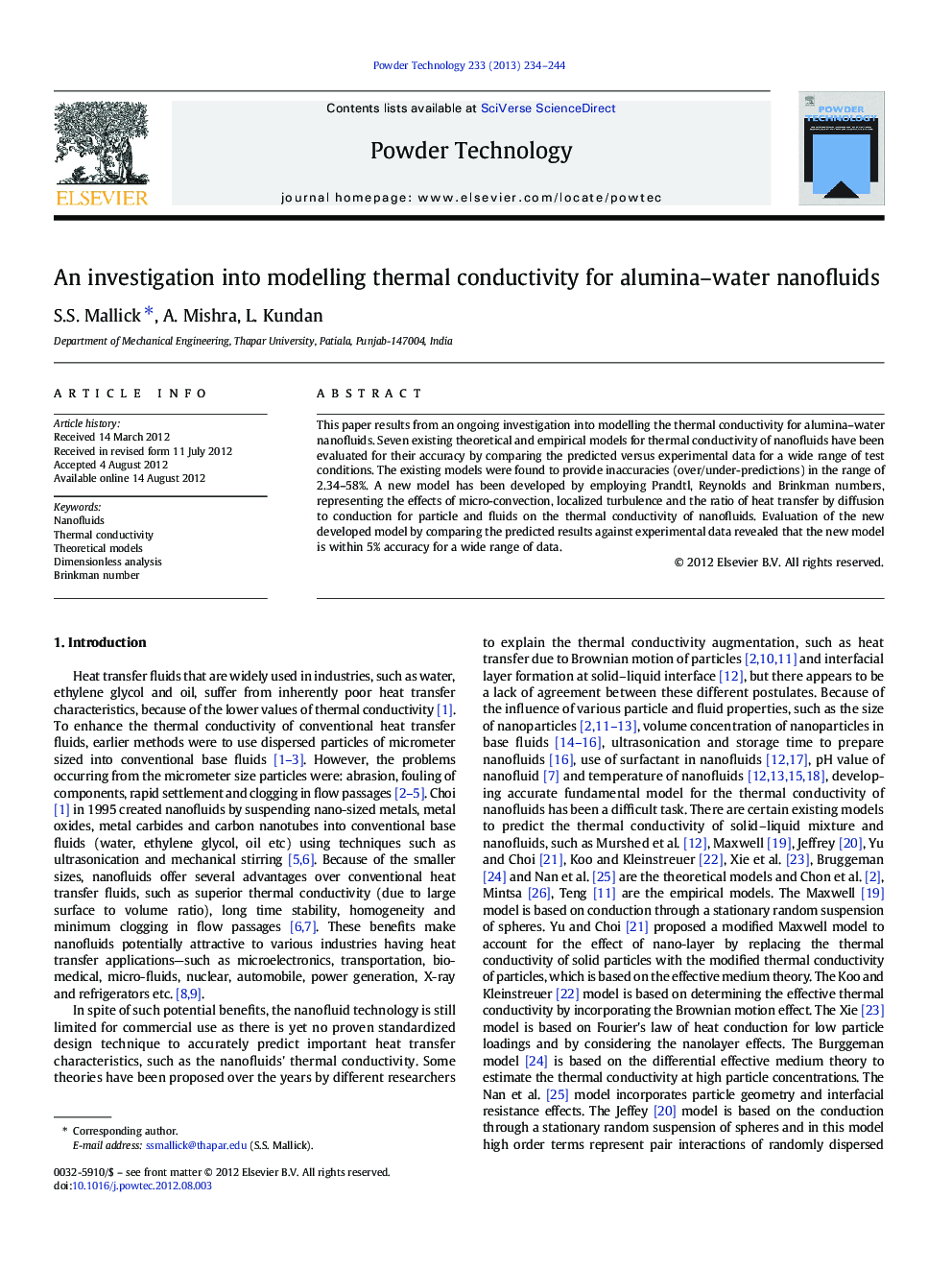| Article ID | Journal | Published Year | Pages | File Type |
|---|---|---|---|---|
| 236935 | Powder Technology | 2013 | 11 Pages |
This paper results from an ongoing investigation into modelling the thermal conductivity for alumina–water nanofluids. Seven existing theoretical and empirical models for thermal conductivity of nanofluids have been evaluated for their accuracy by comparing the predicted versus experimental data for a wide range of test conditions. The existing models were found to provide inaccuracies (over/under-predictions) in the range of 2.34–58%. A new model has been developed by employing Prandtl, Reynolds and Brinkman numbers, representing the effects of micro-convection, localized turbulence and the ratio of heat transfer by diffusion to conduction for particle and fluids on the thermal conductivity of nanofluids. Evaluation of the new developed model by comparing the predicted results against experimental data revealed that the new model is within 5% accuracy for a wide range of data.
Graphical abstractSeven existing theoretical and empirical models for thermal conductivity of nanofluids have been evaluated for a wide range of test conditions. The existing models were found to provide inaccuracies (over/under-predictions) in the range of 2.34–58%. A new model has been developed by employing Prandtl, Reynolds and Brinkman numbers. The new model is within 5% accuracy range.Figure optionsDownload full-size imageDownload as PowerPoint slideHighlights► Eight models of thermal conductivity of alumina–water nanofluids were evaluated. ► Existing models provide 2.34–58% inaccuracy for different experimental conditions. ► New model is developed using dimensionless analysis. ► Model includes local convection, turbulence and diffusive heat transfer. ► New model provides 5% accuracy range for a wide range of data.
